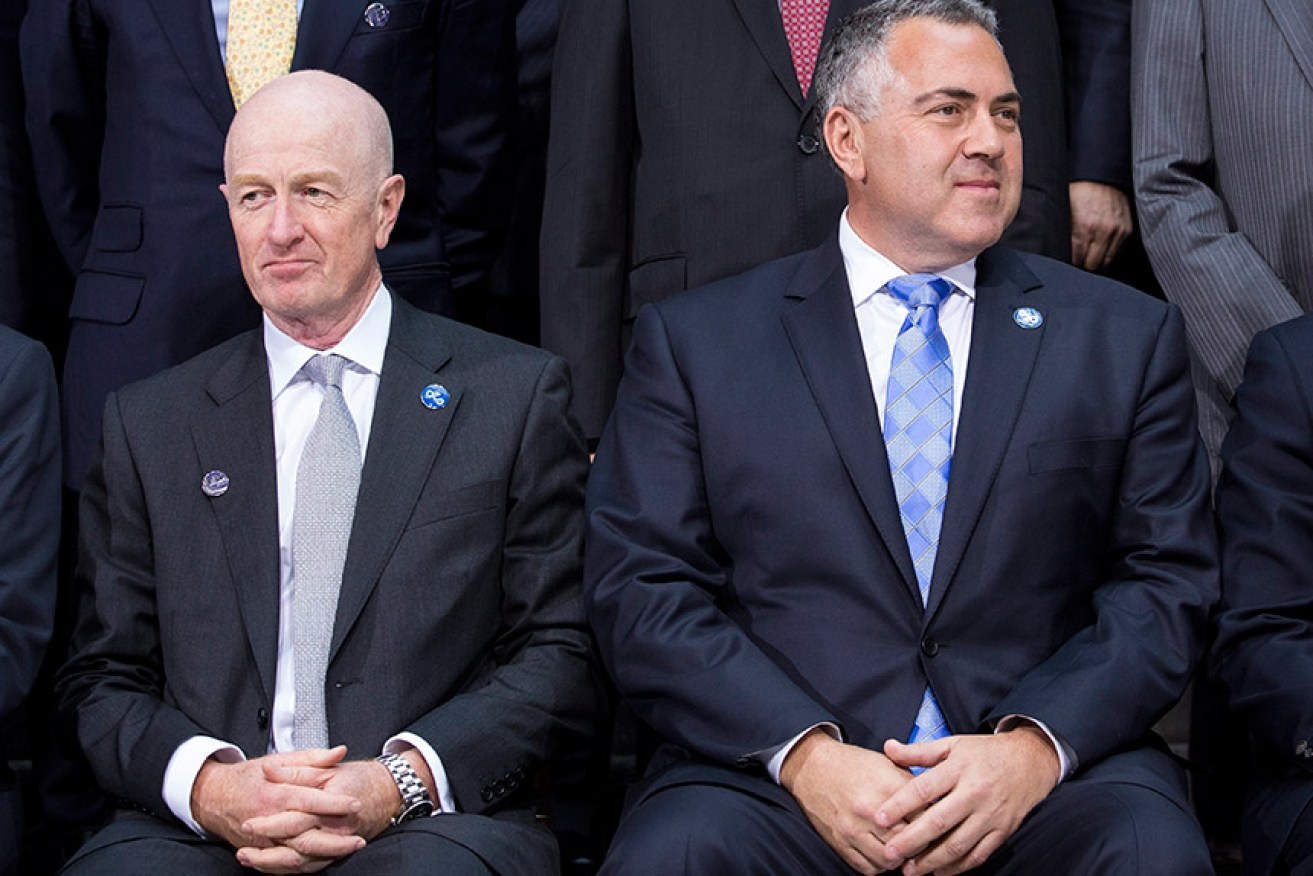The RBA has done its bit. Will the banks do theirs?

The Reserve Bank’s latest cut to official interest rates casts significant doubt on Prime Minister Tony Abbott’s claim that confidence is returning to the Australian economy.
On Tuesday, the RBA decided to cut rates for the first time since August 2013 on concerns about the state of the national economy, surprising senior executives at retail banks who spoke to The New Daily.
In his statement, RBA Governor Glenn Stevens painted a less robust view of the economy’s health and the immediate prospects for enhancing business expansion and a reduction in unemployment.
• What the interest rate cut means for you
• Read the full RBA statement here
• Borrowers’ bonanza: RBA cuts rates to record low
The unemployment rate is now expected to rise above the current level of 6.1 per cent, which is beyond the peak previously expected by the central bank.
“The economy is likely to be operating with a degree of spare capacity for some time yet,” Mr Stevens said in the statement.
The Governor also highlighted “weak” consumer demand as a factor influencing the decision to cut.
Falling petrol prices are likely to support a lift in consumer spending at some time, although the nation’s deteriorating trade position is eroding national income.
The government’s concerns about wage-driven inflation also appear misplaced. According to the RBA, labour costs are “subdued” and inflation is likely to remain under control in the next two years even though the falling Aussie dollar is likely to trigger higher import prices.
 Banks surprised by the cut
Banks surprised by the cut
Bendigo and Adelaide Bank chief executive Mike Hirst told The New Daily he was taken aback by the rate cut.
“It did take me by surprise a bit,” said Mr Hirst.
“I thought that the depreciating Australian dollar and the recent oil price falls had taken some of the heavy lifting in the economy.
“But it’s a welcome move – at the end of the day lowering rates is good for the economy.”
Mr Hirst refused to comment on when his bank would pass on the official cut to home borrowers and business customers. Nor would he comment on whether the bank would be cutting deposit rates to fund rate reductions for borrowers.
Bendigo is the country’s fifth-largest deposit taker behind the major banks and has benefitted from the savings boom among Australian households.
About 80 per cent of all loans written by the bank are financed through customer deposits. Official data published by the bank regulator last week shows that consumers pumped more than $13 billion into savings accounts and term deposits in December – the highest monthly level recorded since the peak of the global financial crisis.
“Not only are consumers saving, but they are also paying down debt significantly,” Mr Hirst said.
While flagging consumer confidence has delivered a deposits bonanza for banks, it has eroded the earnings of leading retailers such as The Reject Shop and Kathmandu, each of whom failed to meet profit targets in the December half. The RBA is hoping the rate cut will get consumers spending again.

Can Joe Hockey do more to convince banks to pass on rate cuts?
Time for Hockey to jawbone the major banks
The RBA rate cut is more good news for the banks’ funding costs, which have fallen consistently over the last three years. Home borrowers can expect banks to pass on the full 0.25 per cent official rate, but the prospects for small business customers getting the same relief are less clear.
If the Federal Government is serious about supporting small businesses to kickstart the economy, Treasurer Joe Hockey should explain why he has been so uncritical of the major banks in their pricing of business loans.
Since the Reserve Bank began easing monetary policy in November 2011, the cash rate has more than halved from 4.75 per cent to 2.25 per cent. But in that period the interest rates on some types of lending to businesses and farmers have barely moved.
For example, Commonwealth Bank’s rates on corporate overdrafts have only fallen 0.76 per cent since 2010. Mr Hockey could go some way to shoring up his popularity in the wider community by following the example set by one of his predecessors, Peter Costello.
As Treasurer throughout the Howard Government’s reign, Costello was a master at publicly embarrassing the banks into passing on official interest rate reductions to borrowers. He understood that regular needling of the banks was necessary for keeping some kind of check on their greed. It won votes, too.
Boosting consumer confidence
Mr Hockey could also do some jawboning on behalf of the nation’s millions of credit card holders, many of whom continue to wear ridiculously high annual rates of above 20 per cent.
Such efforts might help to restore consumer confidence not only by getting the banks to price their credit products more appropriately, but also by retrieving public trust in the government.
Of course, delivering a less alarming budget that gives people fewer reasons to rein in spending might do more for small businesses than even the promised July tax cuts. Without such a lift in consumer confidence the full economic benefits of the official rate cut might be missed.








